Sharing Artifacts and Stories in Isle of Wight County: Archaeological Workshop Highlights Regional History
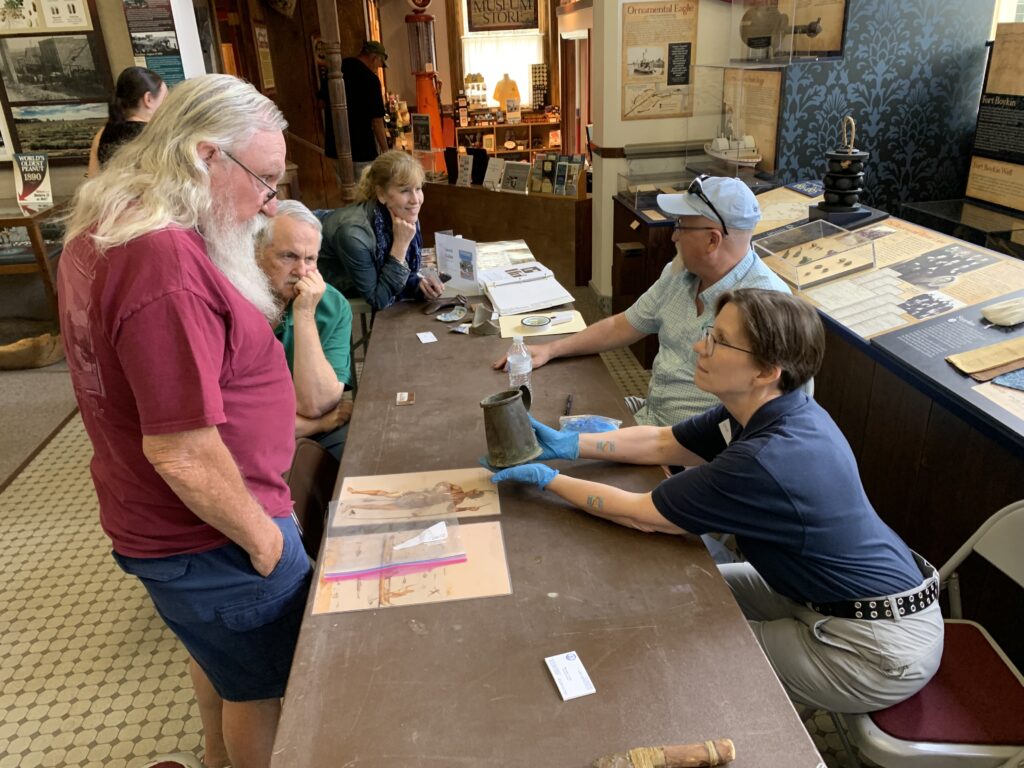
Archaeological staff from DHR and the Department of Environmental Quality held a public workshop at the Isle of Wight County Museum in Smithfield, Virginia, this past summer to help citizens identify artifacts and swap stories of local history. DHR staff describe their experience at the workshop and why one artifact caught researchers' attention.
By Mike Clem, DHR Archaeologist, and Laura Galke, DHR Chief Curator
Fans of local history and heritage joined staff from DHR and the Department of Environmental Quality (DEQ) at the Isle of Wight County Museum for an artifact and archaeological site identification workshop on August 23. The museum’s director, Jennifer England, and her team hosted the event, which was featured in the county’s local paper.
Enthusiastic visitors at the workshop shared their discoveries and exchanged information about the region’s exciting history. They also alerted DHR and DEQ staff about previously unidentified archaeological sites for documentation and research. Guests presented historical artifacts to archaeological staff to be studied, including pottery, early carbonated soda bottles, and European contact–era, locally made smoking pipes.
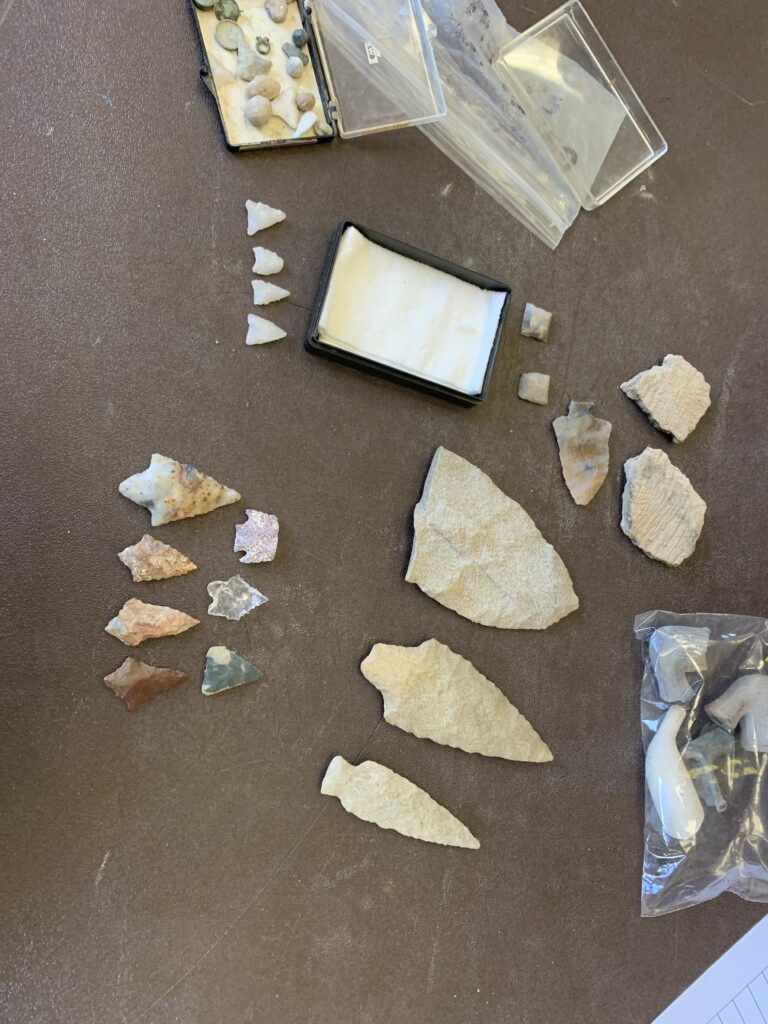
Many artifacts that were examined during the workshop reflected the vast Native American heritage of Virginia. Spear points, arrowheads, and pottery sherds testify to the rich indigenous culture of the area. Generous participants shared their expertise about local history and showed photos of these objects.
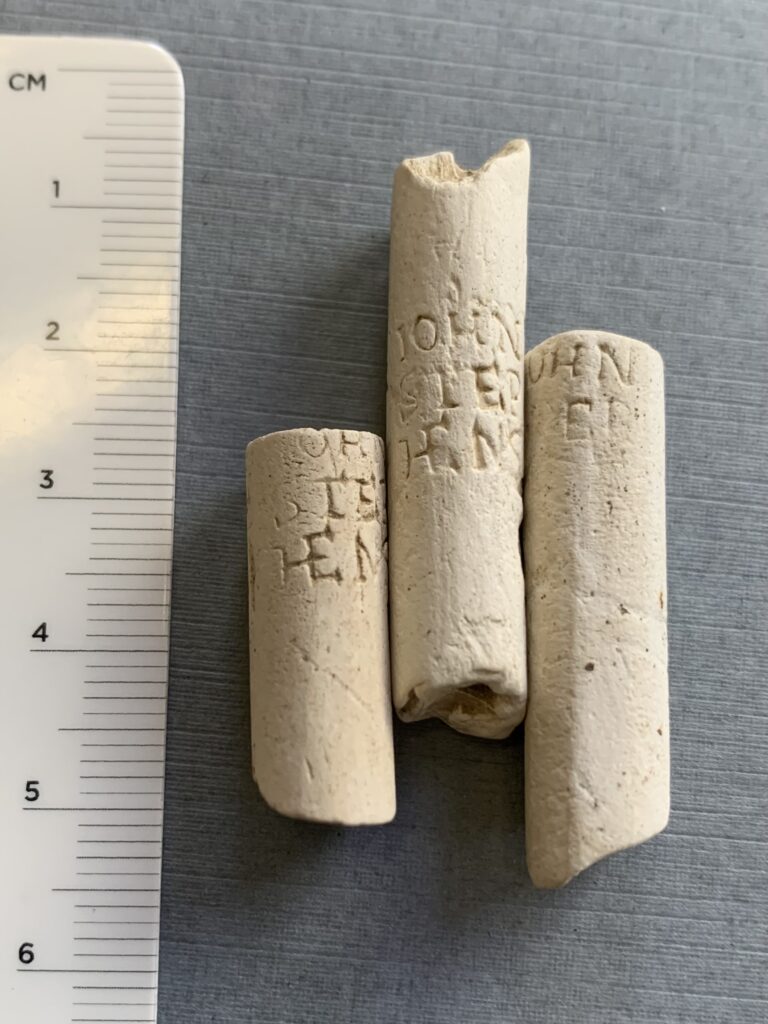
One of the most interesting items that DHR and DEQ staff encountered was a copper alloy European seal matrix. These items were used during the medieval era to impress images into colored wax on official documents. A local property owner found the seal matrix buried in their yard in the Town of Smithfield. The property where the item was recovered happens to be located next to the site of the oldest tavern and early gambling establishment in Smithfield. DEQ Cultural Resources Specialist Chris Egghart shared photos of the seal with Judith Paulos of The Mount Vernon Ladies Association, who then began her investigations into the item.
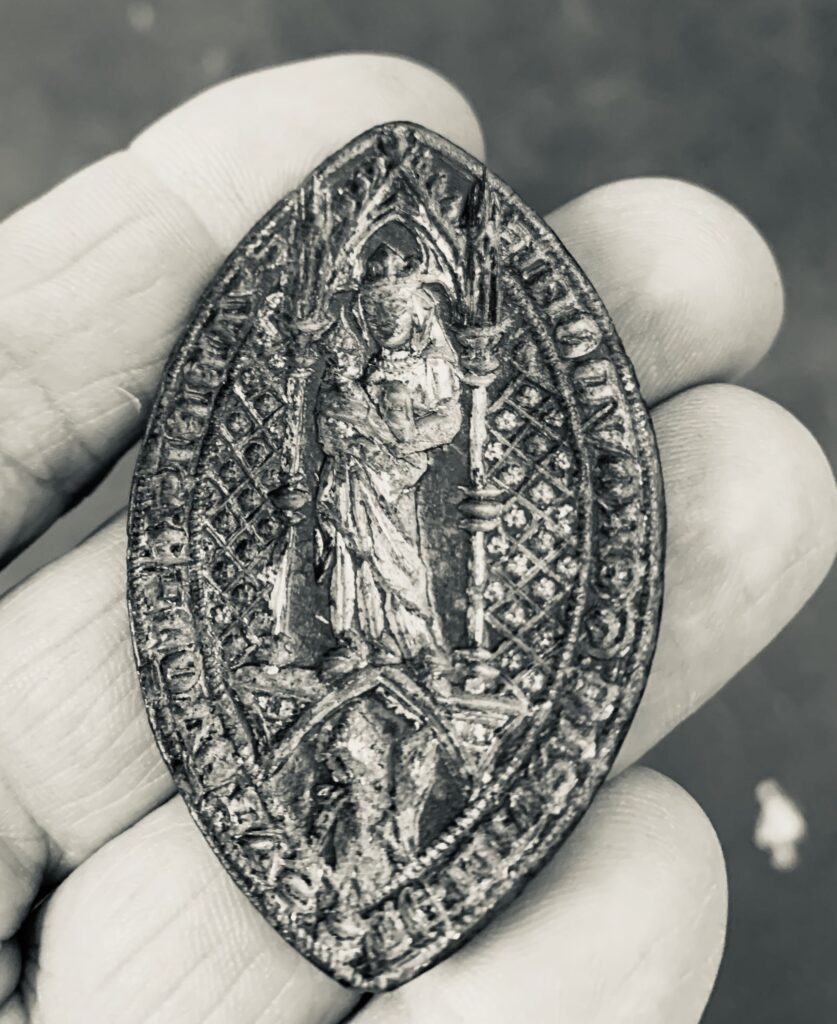
Paulos’s research helped determine that the seal features an image of the Virgin Mary holding the child Jesus in a style reminiscent of similar seals from the Middle Ages. The margins of the seal feature an inscription which—to date—has not been deciphered. The language used is either French, Latin, or Anglo-Norman French—or a combination of those languages—as other examples of seals proved to be. It is likely associated with the Catholic Church since items of the Anglican Church in its early period would not have included an image of Mary. Archaeologists estimate that this artifact was created about 600 to 800 years ago and note that it is a truly rare item to find in the United States. DHR archaeological staff hope to use the seal to make a stamp into clay. Archaeologists are also working with medieval language experts to decipher the seal’s inscription. Doing so may identify the individual who originally owned and used the seal. Identifying the seal’s owner is important for archaeologists and researchers to determine its origins and to consider explanations for how this rare object reached Isle of Wight County, Virginia.
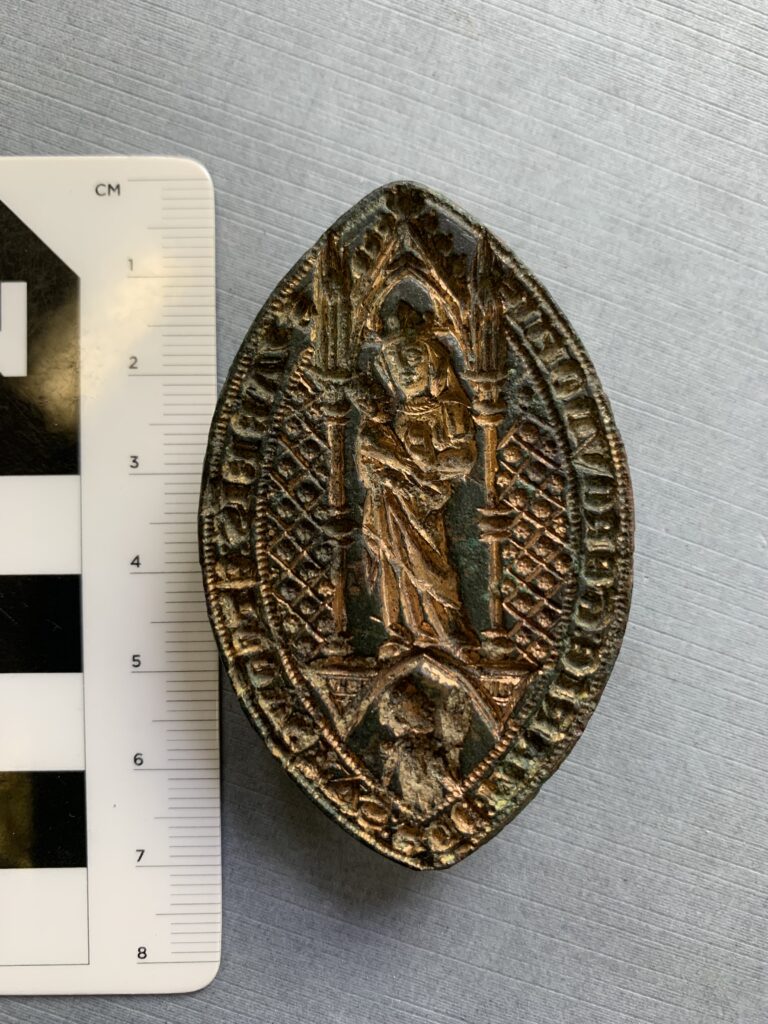
The medieval seal demonstrates the fascinating nature and breadth of history in Virginia as well as our collective history in the U.S. Our long colonial history is filled with little mysteries like these that may never be fully understood. Archaeologists can figure out where the artifact came from; how old it is; who originally requested for it to be made; and where it was created. However, we may never understand how the item made its way into the hands of the person who brought it to Virginia from Europe, or how the item came to be buried in a lawn in Smithfield. Proper archaeological excavations of the area where the seal was found could assist archaeologists in determining when it was lost or buried. As always, a single artifact out of context can only reveal so much information, but an artifact carefully excavated from a context in association with other datable artifacts can reveal a great deal more about the item—the approximate year when it made its way into the ground, whether it was intentionally buried or casually discarded, or whether it could have accidently been tossed out with the daily detritus from the nearby tavern. If further studies reveal more about this intriguing artifact, DHR staff will keep you all posted.
Experts from Mount Vernon (Jason Burroughs), The Colonial Williamsburg Foundation (Sean Devlin), and Jamestown Rediscovery (Leah Stricker) contributed their expertise to help identify and date the seal matrix.
To learn more about medieval seal matrices, visit the website of the Amgueddfa Cymru in Wales, UK, or the Portable Antiquities Scheme seals database.










